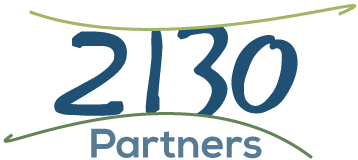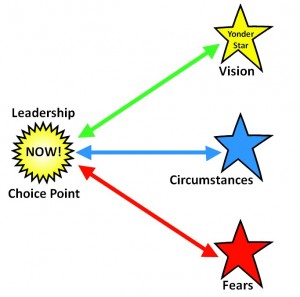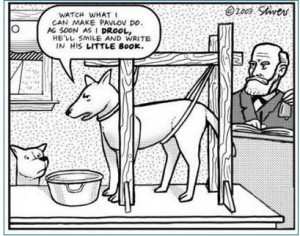The work of 2130 Partners is featured in this article by Dana Borowka of Lighthouse Consulting.
Recently, we have had a number of conversations with CEOs and key executives regarding what they are planning for their businesses for 2011. We have found two categories of individuals. Those that have a vision through listening to others in the market place, reaching out for support, gathering industry data, looking for trends and opportunities. The other group is totally focused on overhead reduction, darting around and focusing on the bad news in the world, taxes, health bills, and any information that they can grab onto to help justify why they are so scared.
Here is the Question for the Day
Which category do you fit into? Your answer will determine how your company is doing today and will be doing in the future. Those that think they know everything are closing themselves off from amazing opportunities.
Certainly all companies need to be constantly looking at overhead and keeping up with the news. However, when the focus is fear driven then our thoughts begin to justify our fears. That wastes time as it creates the continual loop of fear, depression, anxiety, etc.
The group that is forward thinking has a completely different outlook on life. That’s not to say that they don’t have concerns but rather they are using this time to plan ahead, remain clear headed and open to ideas. That is the key – to be still enough in order to listen. Then act on what we are seeing as immediate and future potential for new products and services, improvement in retention of current business as well as ideas for gaining additional market share.
Your focus will tell you immediately where you stand! First, we will explore leadership and how to deal with the fear. Then we’ll share what a group of business owners did that has separated them from many other companies.
How to Become a Vision-Focused Leader
The answer is leadership. It is time to become a vision-focused leader around whom issues can be raised and resolved productively. That’s the view of Suzanne and Dwight Frindt, the founders of 2130 Partners, a leadership development and education firm that facilitates focused vision, inspired teams, and sustained commitment for its clients and co-authors of Accelerate: High Leverage Leadership for Today’s World.
Ask yourself these questions:
- Are your conversations with your team generating the results you want?
- Does your team successfully raise and resolve issues relevant to business success?
- Can you identify and deal with emotional upsets, in both yourself and others?
Exactly what is this leadership that is vision-focused? "We love Warren Bennis’ definition: 'Leadership is the wise use of power. Power is the capacity to translate intention into reality and sustain it,'" says Suzanne Frindt. "Our approach is the same whether we are working with individuals or with entire leadership teams. We believe the greatest opportunities are created by the development of people and action in a coordinated direction. We assert that the only sustainable strategies engage the heart and soul and are simultaneously grounded in sound business practices."
Power of Shared Vision
In a 1996 article in the Harvard Business Review entitled "Building Your Company’s Vision," Jim Collins and Jerry Porras said that companies that enjoy enduring success have a core purpose and core values that remain fixed while their strategies and practices endlessly adapt to a changing world. The rare ability to balance continuity and change—requiring a consciously practiced discipline—is closely linked to the ability to develop a vision.
"Without a vision, what is the point?" says Suzanne Frindt. "A Yonder Star unleashes the energy to galvanize yourself and your employees so you can achieve phenomenal things."
When group members share a vision, it creates an opportunity for totally different conversations between a manager and members of their team. Focus on the shared vision creates alignment and provides a powerful context for creating mission, strategic initiatives, objectives, goals, roles, and finally all the way down through action plans.
Being a manager means making choices. At any moment in time you have a decision to make. Suzanne urges that when it comes time to make a decision being present in the moment, not on automatic pilot, is essential to the quality and relevance of the decision. You can then make the choice based on your Yonder Star, your shared vision of something to which you aspire, versus more of the same or your fear of some worst-case scenario.
"Worries are about envisioning a worst-case scenario, what you fear most," says Suzanne Frindt. "Whatever we envision is affecting us right now. What we envision impacts us in this moment. There are consequences for managing based on fears that you may not want. Your Yonder Star is the shared vision you aspire to. The star is what you envision, and what you envision shapes both the present moment and the quality of your choices about your actions."
Something else she recommends avoiding is being past-focused. This is when you make decisions based solely on what you have done in the past. Instead of having an inspiring vision for your team, all you are working for with a past based focus is attempting to minimize perceived risk and making incremental improvements.
"Many companies are past-focused when they do strategic planning," says Suzanne Frindt. "What did the company do last year and then let’s add 10 percent or 20 percent. We are all tempted to try hard to make yesterday look like today. Or if we didn’t like yesterday, then we try to make it different or better."
She adds that only by having a vision, a Yonder Star, can teams create breakthroughs to unprecedented results. Equally important is that it is a shared vision, one that is based on shared values and shared operating principles. This is how you create an environment for real collaboration.
Overcoming Emotional Barriers
"The ability to identify and clear upsets, in myself and others, is the single most significant key to productivity gains in our economy today," says Dwight Frindt. "We have asked our executive-leadership clients a simple question: 'What time could you go home if everyone in the company simply came to work, did their jobs, and went home?' The answer used to surprise us until it kept being repeated. On average, our clients say, ‘Between 10:30 a.m. and 11:00 a.m.'"
That begs a second question. If so many executives claim they could go home before lunch if everyone just showed up and did their work, what’s taking so much of our leaders' time? The Frindts' clients tell them flat out: distress, commonly known as upsets. The most time-consuming part of their job is managing the distressed interactions within their teams so that those teams can actually get to the business at hand.
"Even if executives will never be able to consistently leave by noon, it is entirely reasonable for them to expect to save at least two hours of their time, every day. Alternatively they could increase their productivity 15–30%" says Dwight Frindt.
That’s nearly 500 extra hours a year leaders can devote to creative thinking, visioning, and strategizing rather than on repairing relationships and soothing bruised egos. At the opportunity cost of most executives’ time, that amounts to very substantial savings. Of course, the same can be said for everyone in the organization. An inordinate amount of productive time and payroll dollars and worse yet, opportunities, are lost daily, monthly and annually to the distraction caused by unresolved emotional distress.
Replacing that time, energy, and resource loss is of paramount importance. Doing so can create a culture that is both highly productive and emotionally resilient and rewarding. It requires a fundamental, transformative shift in two steps: 1) fewer emotionally driven issues in the workplace; and 2) leaders and their team members becoming self-sufficient in handling emotional distress issues when they occur.
"Let’s clarify what we mean by emotional distress," says Dwight Frindt. "We’re using the term to summarize a wide range of reactions that temporarily disable people with regard to thoughtful and productive behavior. These reactions can vary from mild frustration to full-blown anger, and include embarrassment, sadness, impatience, agitation, worry, and fear. In each case the person is left in a condition where, whether realized or not, they are acting as if their very survival is threatened."
The Causes of Emotional Distress
The Frindts' studies and their clients' experiences make it clear that the most common root causes of workplace emotional distress are 1) the perception that a promise has been broken (usually by leadership); 2) when positive intentions "fail"; and 3) when commitments seem thwarted. In addition to these three internal triggers, there are many times when personal distress is brought to the workplace from the rest of the person’s life. These other sources can be especially difficult to address, due to varying perspectives on what constitutes personal-professional boundaries.
The impact on the productivity and organizational effectiveness of people attempting to work while "stressed out" (or surrounded by others who are) is enormous. Yet it’s been the Frindts’ observation that most leaders overlook this as the place to start any efforts in business improvement. Most are far more comfortable with cost cutting, process development, process improvement, reorganizing, or some other business change that does not directly address the human dimension.
Long Term Vision & Working the Plan
Back in 2006/2007, a group of business owners saw the writing on the wall regarding the long term economic change. While some people thumbed their noses at the possibility and buried their heads in the sand… purely out of fear. The forward looking group sought feedback from others who had been through similar business cycles and discovered the following ideas:
- Create your vision: The goal is to have a long range vision for your company.
- Think outside your box: What else can you provide? What other opportunities can you look at? What are some other possibilities that will help others to fulfill their vision?
- What is needed: Listen to the market place and offer valuable services.
- Know your numbers: Where are you and where are you going?
- Work the plan: Develop measurable marketing, sales, financial, internal operations plans then execute and don’t wait. This avoids waste and preserves valuable resources. Through proper planning the dollars can be used to gain market share while other organizations could be financially drained and in a constant state of fear! The forward business group took a three year outlook and developed various action plans and worked the plan.
- Be on the lookout for top "A" and "B" players for hiring top people who have vision.
- Team vision: Have clear goals and objectives for all staff members.
- For new hires at all levels do the most thorough interviewing based on 30-60-90-180-12 month goals.
- Do in-depth work style and personality assessment testing to get a clear picture of who you are about to bring aboard to best manage the individuals so they can be successful.
- Maintain a collaborative team environment where everyone can provide input to create internal efficiencies, all are listening to customer and market needs, and respond in a timely way so your company is always engaged as the business environment has needs.
This is the time to be moving forward by offering fresh ideas, solutions, and support that will add value to all those you come in contact with and in return your business will thrive!
To find out more about these topics you can read our book, Cracking The Personality Code by visiting www.lighthouseconsulting.com. Or if you’d like to find out about the various workshops we provide to help your organization lead into the future visits www.crackingthepersonalitycode.com. We are looking forward to hearing from you.
We offer monthly Open Line web conferences on topics ranging from creating a collaborative environment, how to offer incentives to staff during challenging time, and how to turn fear into strength. We will be having a global futurist as a guest – so please join us. Visit www.lighthouseconsulting.com for a list of our programs.
Permission is needed from Lighthouse Consulting Services to reproduce any portion provided in this article. © 2010
If you would like additional information on this topic or others, please contact your Human Resources department or Lighthouse Consulting Services LLC, 3130 Wilshire Blvd., Suite 550, Santa Monica, CA 90403 & our website: www.lighthouseconsulting.com
Lighthouse Consulting Services, LLC provides a variety of services, including in-depth work style assessments for new hires & staff development, team building, interpersonal & communication training, career guidance & transition, conflict management, workshops, and executive & employee coaching. To order the book, "Cracking the Personality Code" please go to www.crackingthepersonalitycode.com


 I have been listening to a fascinating TED talk on iTunes on “
I have been listening to a fascinating TED talk on iTunes on “ (This post is an edited version of a new article by Suzanne Mayo Frindt. To get the complete text
(This post is an edited version of a new article by Suzanne Mayo Frindt. To get the complete text  How Can We Develop a Learning Culture?
There are many books and articles about learning organizations including work by Senge
How Can We Develop a Learning Culture?
There are many books and articles about learning organizations including work by Senge A Google search for time management blogs produces more than 20,000,000 results. Charles Kettering’s well known phrase “a problem well stated is a problem half solved” gives us a clue as to why so many people are writing and speaking about time management and yet we see a huge percentage of our clients suffering trying to manage their time. We believe the problem neeeds to be "well stated" or reframed. The “Frindt Correlate” to Mr. Kettering’s thoughtful phrase is “a problem misnamed is a problem stuck!”
If you think about it for more than a second or two, it’s clear that you can’t manage time! Time passes tick-tock. In our normal world, (excluding quantum physics from this discussion), it does not go faster or slower and no one has more or less of it than you do. If you want to push that examination to another level, notice that it is always and only ever now. Even when you get to that concept you call the future it will still be now.
A Google search for time management blogs produces more than 20,000,000 results. Charles Kettering’s well known phrase “a problem well stated is a problem half solved” gives us a clue as to why so many people are writing and speaking about time management and yet we see a huge percentage of our clients suffering trying to manage their time. We believe the problem neeeds to be "well stated" or reframed. The “Frindt Correlate” to Mr. Kettering’s thoughtful phrase is “a problem misnamed is a problem stuck!”
If you think about it for more than a second or two, it’s clear that you can’t manage time! Time passes tick-tock. In our normal world, (excluding quantum physics from this discussion), it does not go faster or slower and no one has more or less of it than you do. If you want to push that examination to another level, notice that it is always and only ever now. Even when you get to that concept you call the future it will still be now.
 In the 1920s Ivan Pavlov conducted a series of very famous experiments in which he taught dogs to salivate at the ringing of a bell. If PDAs had been invented, he could have taught the dog to salivate when his cell phone received a call, email or text. He might have even taught the dog to bark so he would never miss an “incoming!”
Much of what we observe in the behavior of those around us looks very similar. Despite frequent complaints about the number of emails and the expectations of immediate responses, PDAs are everywhere and constantly being checked. In our executive groups, members used to talk with each other at breaks. Now they all tend to get on their PDAs, and a good number are peeking throughout the meeting as well. Are you a victim of your PDA? What in the world is it all about?
In the 1920s Ivan Pavlov conducted a series of very famous experiments in which he taught dogs to salivate at the ringing of a bell. If PDAs had been invented, he could have taught the dog to salivate when his cell phone received a call, email or text. He might have even taught the dog to bark so he would never miss an “incoming!”
Much of what we observe in the behavior of those around us looks very similar. Despite frequent complaints about the number of emails and the expectations of immediate responses, PDAs are everywhere and constantly being checked. In our executive groups, members used to talk with each other at breaks. Now they all tend to get on their PDAs, and a good number are peeking throughout the meeting as well. Are you a victim of your PDA? What in the world is it all about? In a recent conference call with a group of our affiliated facilitators, I was struck by the high level of interest in becoming experts in conflict resolution. From divorce counseling to working on international negotiations, their attention was focused on what I call the “seen” portion of communication and relationship. It’s the part where fight, flight, freeze or appease behaviors are very observable and running the show. It’s also the part where people are very appreciative when someone helps pull the thorn out of their proverbial paw. The obviously large market of people, groups and nations in conflict is clearly calling to them.
Those in pain seem to be much more more willing to pay to reduce or eliminate the pain versus figuring out how to avoid it in the first place. In the physical world, that translates into Western medicine being largely focused on managing disease and illness instead of prevention. In the “unseen” world of our psyche, it translates into therapists, lawyers, and judges dominating the world of struggling marriages and breakdowns in business relationships.
In a recent conference call with a group of our affiliated facilitators, I was struck by the high level of interest in becoming experts in conflict resolution. From divorce counseling to working on international negotiations, their attention was focused on what I call the “seen” portion of communication and relationship. It’s the part where fight, flight, freeze or appease behaviors are very observable and running the show. It’s also the part where people are very appreciative when someone helps pull the thorn out of their proverbial paw. The obviously large market of people, groups and nations in conflict is clearly calling to them.
Those in pain seem to be much more more willing to pay to reduce or eliminate the pain versus figuring out how to avoid it in the first place. In the physical world, that translates into Western medicine being largely focused on managing disease and illness instead of prevention. In the “unseen” world of our psyche, it translates into therapists, lawyers, and judges dominating the world of struggling marriages and breakdowns in business relationships. We call this type of work “triage” which Merriam-Webster defines as 1) “a sorting of and allocation of treatment to patients and especially battle and disaster victims...” and 2) the assigning of priority order to funds on the basis of where funds an other resources can best be used, are most needed, or are most likely to achieve success.” When I recall my mom saying, “An ounce of prevention is worth a pound of cure,” the whole cultural spending priority seems backwards to me.
We call this type of work “triage” which Merriam-Webster defines as 1) “a sorting of and allocation of treatment to patients and especially battle and disaster victims...” and 2) the assigning of priority order to funds on the basis of where funds an other resources can best be used, are most needed, or are most likely to achieve success.” When I recall my mom saying, “An ounce of prevention is worth a pound of cure,” the whole cultural spending priority seems backwards to me. I have periodically noticed there seem to be a lot of issues around the word “no.” Not so much about saying it, but about not saying it. It is the absence of no, at times when it is the best answer, which seems to create all sorts of problems.
The dictionary says simply that ‘no’ means “a negative response; a denial or refusal.” In and of itself that meaning certainly doesn’t seem to be a big deal. So what’s the issue?
During an exploration of his “stressed out” state, one of our clients recently blurted out, “If I say no, the whole house of cards will come down! People will find out that I’m inadequate…I have to say yes to everything that comes at me to please everyone, even though the demands are killing me!” This client is not the exception and he is likely correct, this need to perpetuate a “superman” image is probably killing him and it could be killing you and/or your team members. As a leader it’s important to consider this. Do you have a culture that does not allow “no?” What are the consequences?
I have periodically noticed there seem to be a lot of issues around the word “no.” Not so much about saying it, but about not saying it. It is the absence of no, at times when it is the best answer, which seems to create all sorts of problems.
The dictionary says simply that ‘no’ means “a negative response; a denial or refusal.” In and of itself that meaning certainly doesn’t seem to be a big deal. So what’s the issue?
During an exploration of his “stressed out” state, one of our clients recently blurted out, “If I say no, the whole house of cards will come down! People will find out that I’m inadequate…I have to say yes to everything that comes at me to please everyone, even though the demands are killing me!” This client is not the exception and he is likely correct, this need to perpetuate a “superman” image is probably killing him and it could be killing you and/or your team members. As a leader it’s important to consider this. Do you have a culture that does not allow “no?” What are the consequences? So I cut a deal with Joanna in which I promised to take her calls, no matter what, and she never had to feel guilty about making another request, even if the last one was just yesterday. In return I would genuinely consider the request and unless I was really interested, most of the time I would simply say no. No stories, excuses, apologies, etc. Just no.
So I cut a deal with Joanna in which I promised to take her calls, no matter what, and she never had to feel guilty about making another request, even if the last one was just yesterday. In return I would genuinely consider the request and unless I was really interested, most of the time I would simply say no. No stories, excuses, apologies, etc. Just no. Witnessing the recent events in the Middle East has provoked feelings and reactions on many levels. Since this blog focuses on leadership, we want to point out a leadership lesson that we see. (Note: Because this is a leadership blog we are NOT making any comments about the political, economic or larger social implications of what is happening. We recognize that what is happening is complex. We are going to pull out and comment on a particular thread.)
When a situation is large scale and extreme, it creates a “stark relief map” where things become vividly visible. This is why looking at the leadership in the Middle East is relevant to leadership within organizations. Similar dynamics can and do happen within many organizations, just on a more subtle and less complex level.
Witnessing the recent events in the Middle East has provoked feelings and reactions on many levels. Since this blog focuses on leadership, we want to point out a leadership lesson that we see. (Note: Because this is a leadership blog we are NOT making any comments about the political, economic or larger social implications of what is happening. We recognize that what is happening is complex. We are going to pull out and comment on a particular thread.)
When a situation is large scale and extreme, it creates a “stark relief map” where things become vividly visible. This is why looking at the leadership in the Middle East is relevant to leadership within organizations. Similar dynamics can and do happen within many organizations, just on a more subtle and less complex level. Many business owners, entrepreneurs, and professionals are “visionaries” – independent minded self-starters with lots of creativity and ideas. They often have a deep belief and confidence in their own point-of-view. If you are one of these people and have been successful, these traits have served you well. The challenge is that, at some point, to increase your level of productivity and success, it will take a team around you.
Many business owners, entrepreneurs, and professionals are “visionaries” – independent minded self-starters with lots of creativity and ideas. They often have a deep belief and confidence in their own point-of-view. If you are one of these people and have been successful, these traits have served you well. The challenge is that, at some point, to increase your level of productivity and success, it will take a team around you.
 “What Are You Really Good At?”
“What Are You Really Good At?” To move into a New Year powerfully and to create the results you want there are some key steps to take. The first is creating an "elegant ending" to the past. Last week we posted about "
To move into a New Year powerfully and to create the results you want there are some key steps to take. The first is creating an "elegant ending" to the past. Last week we posted about " If you’ve been successful at this level of work and/or are ready to take on your first effort at a Strategic Plan for your company or affiliation, we suggest using what we call our “2130 Partners Hot Wired Strategic Plan.” We call it Hot Wired because it covers many of the levels and topics of an elaborate plan and yet you can produce a decent draft in a couple of hours. The next pass can then be developed to whatever level of detail you wish. The key, however, is to get the initial draft knocked out in as short a time as you can so that you shift your paradigm about goals and actions as you develop the more detailed plans.
If you’ve been successful at this level of work and/or are ready to take on your first effort at a Strategic Plan for your company or affiliation, we suggest using what we call our “2130 Partners Hot Wired Strategic Plan.” We call it Hot Wired because it covers many of the levels and topics of an elaborate plan and yet you can produce a decent draft in a couple of hours. The next pass can then be developed to whatever level of detail you wish. The key, however, is to get the initial draft knocked out in as short a time as you can so that you shift your paradigm about goals and actions as you develop the more detailed plans.  It’s the time of year when many of us conduct annual rituals that may include everything from strategic planning sessions for business to making New Year’s resolutions or setting Bold Goals for 2011 and beyond. We’ve found any such process to be much harder to do when we haven’t completed and let go of the past. It’s very difficult, (impossible?), to really move forward when we are carting the past along with us. The process of letting go can include changing your attitude and perceptions about what the economy did to you, to digging very deep and letting go of some of the childhood stuff that shapes your life.
On the fun end of the spectrum, we have for many years put flip chart paper all over our walls when we have a New Year’s Eve party with a simple question on each, such as “What did I start and not complete?” or “What did I accomplish that I haven’t been acknowledged for?” or “What did I screw up that I didn’t get caught for?” Guests write on the charts all evening with colored markers and sometimes get even more creative with a touch of artistic display as well. On a number of occasions we have taken them all down at midnight and symbolically burned them.
It’s the time of year when many of us conduct annual rituals that may include everything from strategic planning sessions for business to making New Year’s resolutions or setting Bold Goals for 2011 and beyond. We’ve found any such process to be much harder to do when we haven’t completed and let go of the past. It’s very difficult, (impossible?), to really move forward when we are carting the past along with us. The process of letting go can include changing your attitude and perceptions about what the economy did to you, to digging very deep and letting go of some of the childhood stuff that shapes your life.
On the fun end of the spectrum, we have for many years put flip chart paper all over our walls when we have a New Year’s Eve party with a simple question on each, such as “What did I start and not complete?” or “What did I accomplish that I haven’t been acknowledged for?” or “What did I screw up that I didn’t get caught for?” Guests write on the charts all evening with colored markers and sometimes get even more creative with a touch of artistic display as well. On a number of occasions we have taken them all down at midnight and symbolically burned them. attendance to remembrances of lost loved ones or unhappy childhood experiences related to the holidays. The latter is fertile ground for completion work.
attendance to remembrances of lost loved ones or unhappy childhood experiences related to the holidays. The latter is fertile ground for completion work. I'm watching my alma mater, Northwestern University, play football while flying the first leg of our trip to Ecuador. As a very small school playing in the Big 10, NU teams have always struggled to hold their own in the conference and, once in a while, produce a team that excels. When they do, they do it with heart and commitment that far exceeds their talent and depth. In this game, the announcers are praising NU's quarterback, Dan Persa, (who is not one of the big names in the country), as someone who "will always get whatever is there to get." In fact, he has just run for his second touchdown and then thrown for his third and they are still in the first quarter of the game!
This has got me thinking about great leaders. They know how “to get whatever is there to get”- meaning they find the opportunities big and small in every situation and leverage them for all they are worth.
I'm watching my alma mater, Northwestern University, play football while flying the first leg of our trip to Ecuador. As a very small school playing in the Big 10, NU teams have always struggled to hold their own in the conference and, once in a while, produce a team that excels. When they do, they do it with heart and commitment that far exceeds their talent and depth. In this game, the announcers are praising NU's quarterback, Dan Persa, (who is not one of the big names in the country), as someone who "will always get whatever is there to get." In fact, he has just run for his second touchdown and then thrown for his third and they are still in the first quarter of the game!
This has got me thinking about great leaders. They know how “to get whatever is there to get”- meaning they find the opportunities big and small in every situation and leverage them for all they are worth. This is the time of year when the majority of our clients and friends are working on "what’s next." The effort ranges from New Year’s resolutions, to budgets, to creating an entirely new vision and, (hopefully), strategy to go with it.
Most often, we find these efforts produce predictions based on past experience, rather than launching a truly bold vision. Vision has more to do with a dream for the future than what's happened in the past. (We talk a lot about the differences
This is the time of year when the majority of our clients and friends are working on "what’s next." The effort ranges from New Year’s resolutions, to budgets, to creating an entirely new vision and, (hopefully), strategy to go with it.
Most often, we find these efforts produce predictions based on past experience, rather than launching a truly bold vision. Vision has more to do with a dream for the future than what's happened in the past. (We talk a lot about the differences  The bad news part is that past-based predictions also keep us enslaved to what’s stored in our mental database, (or what we fondly call "the mental File Cabinet.") It keeps our attention on our limitations. For example, we know of a current head-hunter who is working on a placement. He has recently talked with a potential candidate and told him, “I can’t present you for this CEO job, for which you are an excellent candidate, because you don’t have a chemistry degree." By the way, the last CEO, (who failed), had a chemistry degree and the Board of Directors insists on the new candidates having one also. So it's an interesting issue. In this example, if a chemistry degree could predict and determine success, why did the previous guy fail? Why does it make it a given that this other outstanding candidate will fail because he doesn't have one? Somewhere in the past, this notion became a "predictor of success" and even in the face of evidence to the contrary, it's still being pursued. (This is why we used the strong language "enslaved" in the first sentence of this paragraph.)
The bad news part is that past-based predictions also keep us enslaved to what’s stored in our mental database, (or what we fondly call "the mental File Cabinet.") It keeps our attention on our limitations. For example, we know of a current head-hunter who is working on a placement. He has recently talked with a potential candidate and told him, “I can’t present you for this CEO job, for which you are an excellent candidate, because you don’t have a chemistry degree." By the way, the last CEO, (who failed), had a chemistry degree and the Board of Directors insists on the new candidates having one also. So it's an interesting issue. In this example, if a chemistry degree could predict and determine success, why did the previous guy fail? Why does it make it a given that this other outstanding candidate will fail because he doesn't have one? Somewhere in the past, this notion became a "predictor of success" and even in the face of evidence to the contrary, it's still being pursued. (This is why we used the strong language "enslaved" in the first sentence of this paragraph.) Our book, "
Our book, " In a workshop the other day, 2130 Partners' co-founder, Suzanne Frindt, (who is also my wife), used the term "Lazy Labels" to capture the instant, automatic, and unexamined statements many, if not all of us make on a fairly regular basis. These statements could also be called "knee jerk reactions." In this highly charged season of political sound-bites, such Lazy Labels seem to be flying everywhere! What we notice about "Lazy Labels" is that they seem to be a convenient way to suppress complex topics you don't actually understand, don't want to examine, or have "already made up your mind about." The issue with this is that their use diminishes your effectiveness as a vision-focused leader. Let me explain.
Lazy Labels often have the effect of "shutting things down" like diagloue and conversations. If you stop dialogue, healthy inquiry, and curiosity-based listening with one of those quick labels/statements, you and those around you, will never learn more about each others' knowledge, perspectives and feelings. In fact your brain has a mechanism to be sure you don't learn anything that disagrees with your Lazy Label. You won't be learning anything new about the subject at all. You will only see evidence that agrees with you. As we have written about often, we believe this is the era of collaborative leadership. We need each other's skills, competencies, knowledge and perspective now more than ever, so shutting yourself and/or your team members down is dangerous.
In a workshop the other day, 2130 Partners' co-founder, Suzanne Frindt, (who is also my wife), used the term "Lazy Labels" to capture the instant, automatic, and unexamined statements many, if not all of us make on a fairly regular basis. These statements could also be called "knee jerk reactions." In this highly charged season of political sound-bites, such Lazy Labels seem to be flying everywhere! What we notice about "Lazy Labels" is that they seem to be a convenient way to suppress complex topics you don't actually understand, don't want to examine, or have "already made up your mind about." The issue with this is that their use diminishes your effectiveness as a vision-focused leader. Let me explain.
Lazy Labels often have the effect of "shutting things down" like diagloue and conversations. If you stop dialogue, healthy inquiry, and curiosity-based listening with one of those quick labels/statements, you and those around you, will never learn more about each others' knowledge, perspectives and feelings. In fact your brain has a mechanism to be sure you don't learn anything that disagrees with your Lazy Label. You won't be learning anything new about the subject at all. You will only see evidence that agrees with you. As we have written about often, we believe this is the era of collaborative leadership. We need each other's skills, competencies, knowledge and perspective now more than ever, so shutting yourself and/or your team members down is dangerous.
 In her November 5, 2009 blog post entitled, “
In her November 5, 2009 blog post entitled, “ During a conversation with one of our CEO clients this morning, we saw more deeply into something that I’ve been puzzling about for a long time that was both helpful and a bit entertaining for him. My puzzle has been ‘what makes it so hard for most of us to fully articulate and then share our real dreams with those around us? ‘
What came clear out of our conversation is that there is great personal risk in fully speaking a dream, even to yourself. Our histories, (which we fondly refer to metaphorically at 2130 Partners as "File Cabinets"), have lots of evidence stored in them about things that haven’t turned out, limiting beliefs, and circumstances that will prevent success. These "historical files" may well be aggregated under the section tab called "Impossible."
During a conversation with one of our CEO clients this morning, we saw more deeply into something that I’ve been puzzling about for a long time that was both helpful and a bit entertaining for him. My puzzle has been ‘what makes it so hard for most of us to fully articulate and then share our real dreams with those around us? ‘
What came clear out of our conversation is that there is great personal risk in fully speaking a dream, even to yourself. Our histories, (which we fondly refer to metaphorically at 2130 Partners as "File Cabinets"), have lots of evidence stored in them about things that haven’t turned out, limiting beliefs, and circumstances that will prevent success. These "historical files" may well be aggregated under the section tab called "Impossible." This twist on an old tongue twister is a light-hearted access to something we have been noticing more and more recently. What we are seeing is a phenonmenon of clients "speaking in woulds." Instead of speaking in a direct and declarative way, e.g. “I’d say it’s time to deal with that topic, take action, etc. we are hearing people say “What I would say about that topic is...” It seems to have become a fairly common way to speak in meetings and such, yet it leaves me wondering what is actually going on with the speaker?
It seems very similar to when people speak about a personal experience using "you" to explain it. For example, “well, you know, when you’re cold and tired...” except they are speaking about their own hiking adventure or whatever. Whether you are "speaking in woulds" or "speaking in yous," in both cases you are subconsciously distancing yourself from your own experience and turning a valuable opportunity for real connection and sharing into just distant story or removed opinion.
This twist on an old tongue twister is a light-hearted access to something we have been noticing more and more recently. What we are seeing is a phenonmenon of clients "speaking in woulds." Instead of speaking in a direct and declarative way, e.g. “I’d say it’s time to deal with that topic, take action, etc. we are hearing people say “What I would say about that topic is...” It seems to have become a fairly common way to speak in meetings and such, yet it leaves me wondering what is actually going on with the speaker?
It seems very similar to when people speak about a personal experience using "you" to explain it. For example, “well, you know, when you’re cold and tired...” except they are speaking about their own hiking adventure or whatever. Whether you are "speaking in woulds" or "speaking in yous," in both cases you are subconsciously distancing yourself from your own experience and turning a valuable opportunity for real connection and sharing into just distant story or removed opinion.